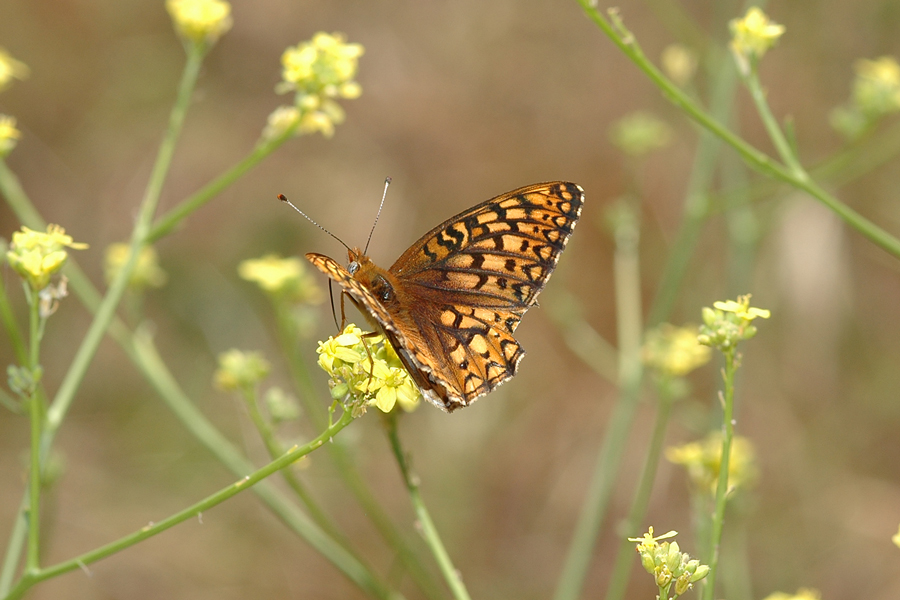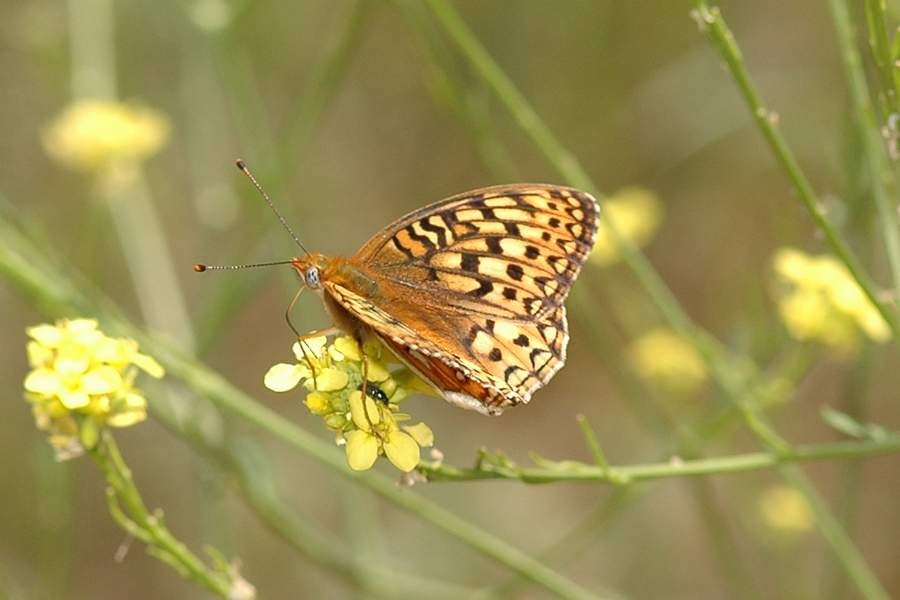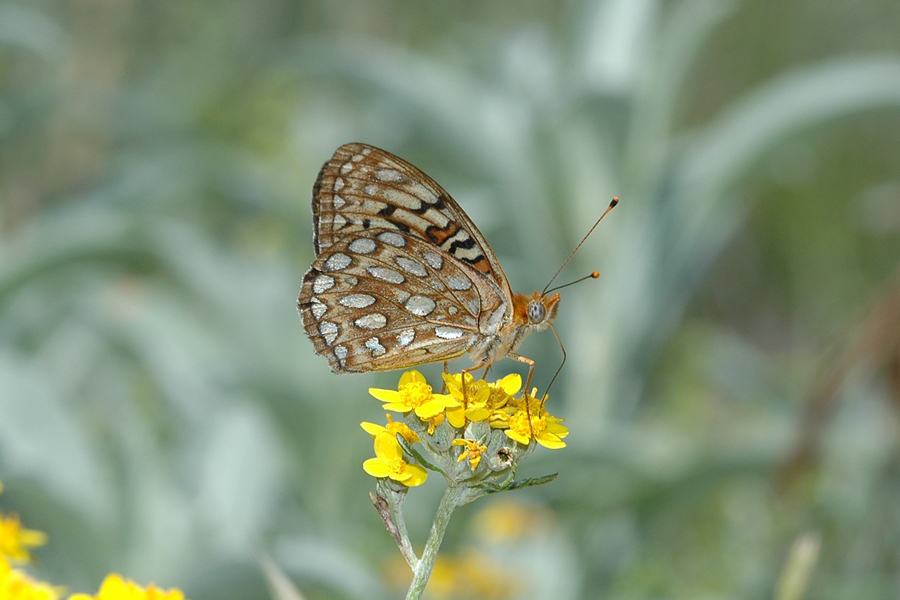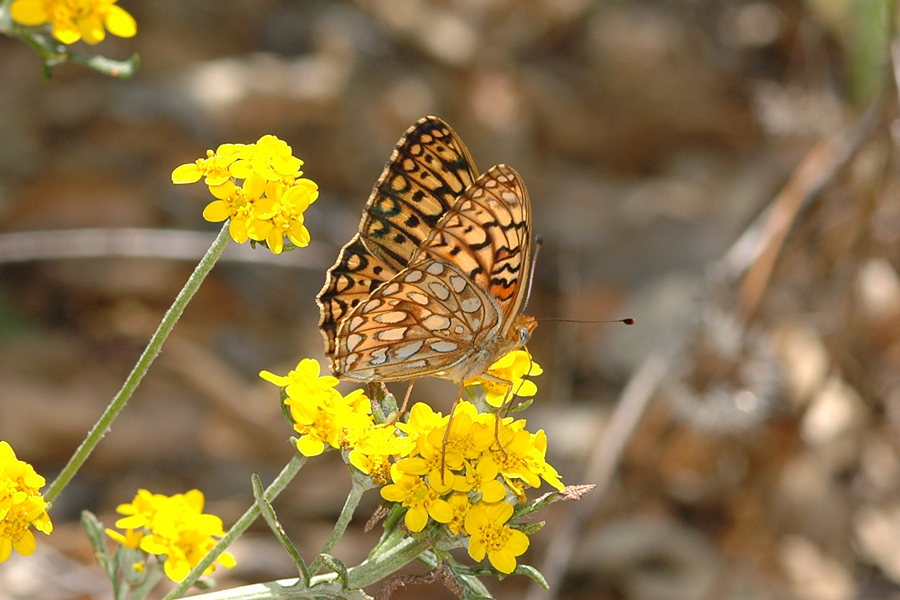Argynnis callippe comstocki
Comstock's Callippe Fritillary
This fritillary can be distinguished from others - usually coronis in our area - by the heavy dark markings on the wings. Adults typically fly in June in grassy areas where the host plant - violets - will grow (they will be past bloom, usually Feb.-April). Females lay eggs in the general area where the plants will come up next spring, and the butterfly will spend the winter as a first-instar caterpillar. Caterpillars tend to hide when not feeding, which is most of the time, so they are difficult to find; they may be under leaves or debris. Garth and Tilden (California Butterflies, 1986, p.74) say larvae are nocturnal. They build a nest in which to pupate.
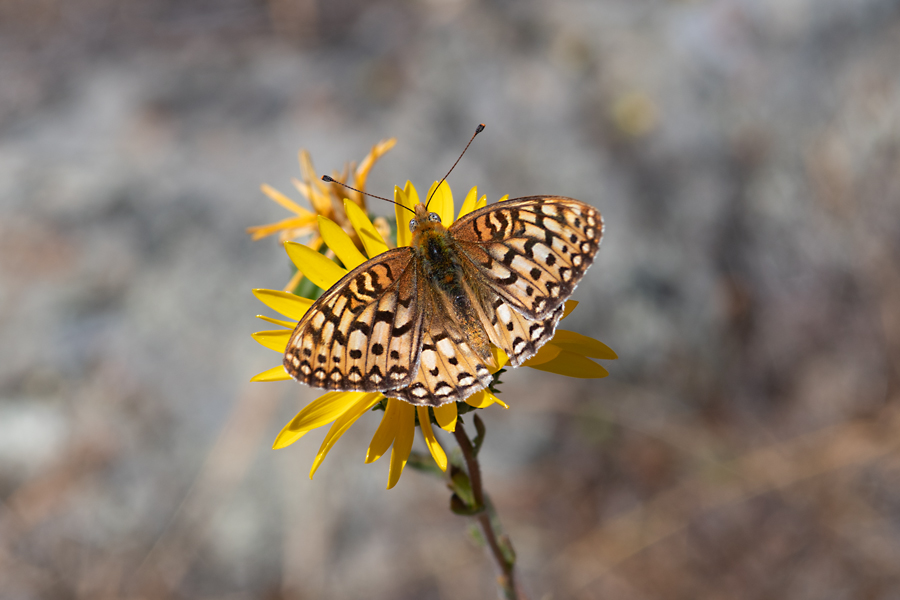
Argynnis callippe comstocki from the Reservoir Canyon Loop Trail in San Luis Obispo, where they are common in open grassy areas, such as around the spine of the mountaintop. June 14, 2021. They were well along in the flight by then; I imagine mid-May to early June would have been perfect for fresh adults. Viola pedunculata may be the host here.
Argynnis callippe comstocki at Blue Jay Campground, June 8, 2006. These callippe are easily distinguished from coronis semiramis in our local mountains. But up north in Kern County the situation is different. Mt. Piños, for instance, has callippe and coronis subspecies that are more of a challenge to identify.
Another at Blue Jay Campground on the same day as above. Those below were taken the same day as well.
Argynnis callippe comstocki - the ventral side, which is silvered (i.e., it has silvery scales - not all species do).
Argynnis callippe comstocki - another ventral view. These were in a meadow with tall grass where host violets grow.
©Dennis Walker

